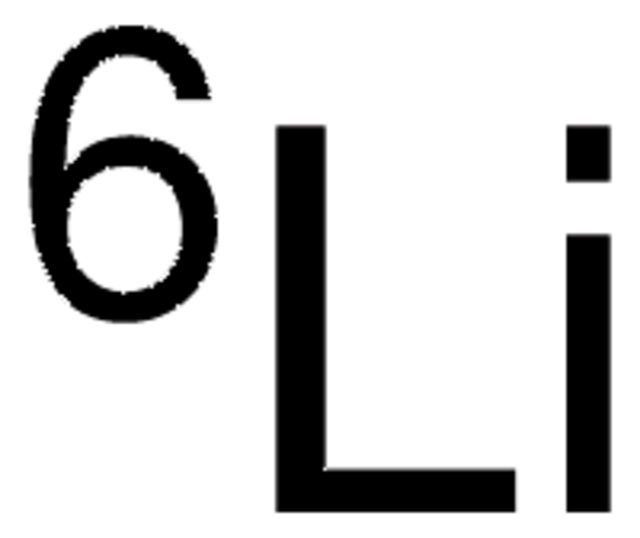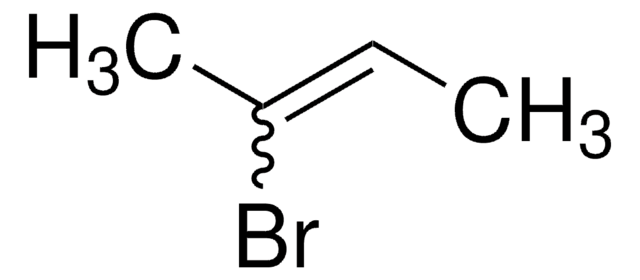278327
Lithium
wire, diam. 3.2 mm, in mineral oil, ≥98%
About This Item
Empfohlene Produkte
Assay
≥98%
Form
wire
Enthält
copper as stabilizer
Eignung der Reaktion
reagent type: reductant
Grünere Alternativprodukt-Eigenschaften
Design for Energy Efficiency
Learn more about the Principles of Green Chemistry.
sustainability
Greener Alternative Product
Widerstandsfähigkeit
9.446 μΩ-cm, 20°C
Durchmesser
3.2 mm
Verunreinigungen
0.5-1% sodium
bp
1342 °C (lit.)
mp (Schmelzpunkt)
180 °C (lit.)
Dichte
0.534 g/mL at 25 °C (lit.)
Anwendung(en)
battery manufacturing
Grünere Alternativprodukt-Kategorie
SMILES String
[Li]
InChI
1S/Li
InChIKey
WHXSMMKQMYFTQS-UHFFFAOYSA-N
Suchen Sie nach ähnlichen Produkten? Aufrufen Leitfaden zum Produktvergleich
Allgemeine Beschreibung
Anwendung
Signalwort
Danger
H-Sätze
Gefahreneinstufungen
Skin Corr. 1B - Water-react 1
Zusätzliche Gefahrenhinweise
Lagerklassenschlüssel
4.3 - Hazardous materials which set free flammable gases upon contact with water
WGK
WGK 1
Flammpunkt (°F)
Not applicable
Flammpunkt (°C)
Not applicable
Analysenzertifikate (COA)
Suchen Sie nach Analysenzertifikate (COA), indem Sie die Lot-/Chargennummer des Produkts eingeben. Lot- und Chargennummern sind auf dem Produktetikett hinter den Wörtern ‘Lot’ oder ‘Batch’ (Lot oder Charge) zu finden.
Besitzen Sie dieses Produkt bereits?
In der Dokumentenbibliothek finden Sie die Dokumentation zu den Produkten, die Sie kürzlich erworben haben.
Kunden haben sich ebenfalls angesehen
Artikel
Increasing fuel costs and concerns about greenhouse gas emissions have spurred the growth in sales of hybrid electric vehicles (HEVs) that carry a battery pack to supplement the performance of the internal combustion engine (ICE).
Nanomaterials for Energy Storage in Lithium-ion Battery Applications
Professor Qiao’s laboratory lays out recent advances in conversion type lithium metal fluoride batteries. This review explores key concepts in developing electrochemically stable microstructures for wide Li-ion insertion channels.
Recent demand for electric and hybrid vehicles, coupled with a reduction in prices, has caused lithium-ion batteries (LIBs) to become an increasingly popular form of rechargeable battery technology.
Unser Team von Wissenschaftlern verfügt über Erfahrung in allen Forschungsbereichen einschließlich Life Science, Materialwissenschaften, chemischer Synthese, Chromatographie, Analytik und vielen mehr..
Setzen Sie sich mit dem technischen Dienst in Verbindung.





